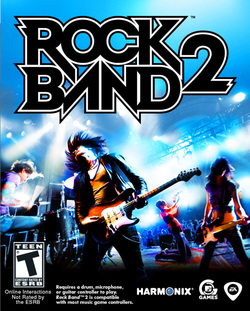|
Platforms: Xbox 360, Playstation 3, Playstation 2, Wii
Studio: Harmonix Publisher: MTV Games, Electronic Arts rockband.com |
The followup to Rock Band saw a refresh of the controller hardware and a refinement of the mechanics and UI that reflected players' needs.
Many changes were made to campaign and UI flows, inspired by feedback from the vibrant and vocal fan community. This, along with a growing research department at Harmonix, produced a game that was easier to navigate and play, alone or with friends. This installment also saw a marked advancement in hardware quality. Player stories indicated that the little plastic instruments needed to be sturdier to survive life in the living room. I created a database to catalog every instrument in the studio, referencing its age, production run, and history. We ran diary studies with community members, and simulated our own rough use cases— shoving them under sofas, stuffing them in drawers, and dropping them from heights. Our most interesting finding was that some players reported accelerometer misfires in structurally perfect guitars. We realized that reclining on a sofa (rather than upright, in an office chair), created the necessary angle to reproduce the issue. The sensor was adjusted and the problem disappeared. My contributions included...
Typical design questions
|
